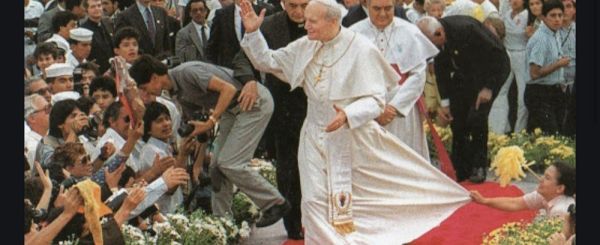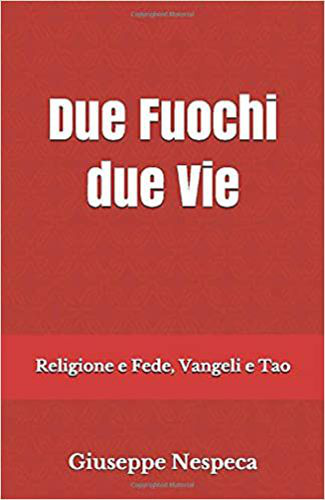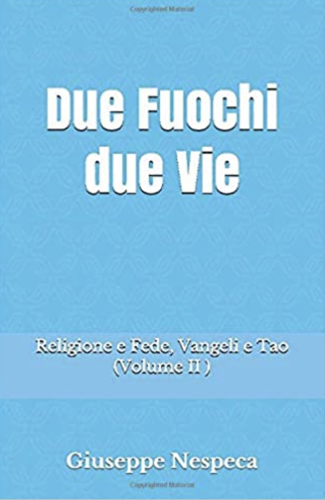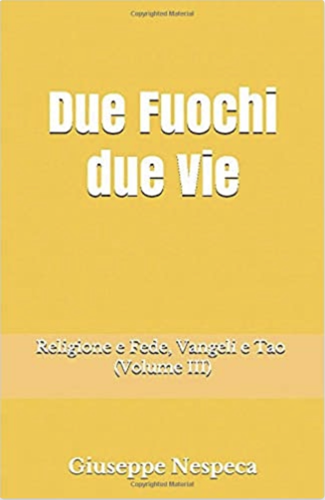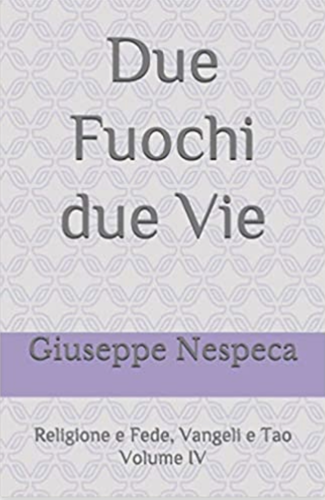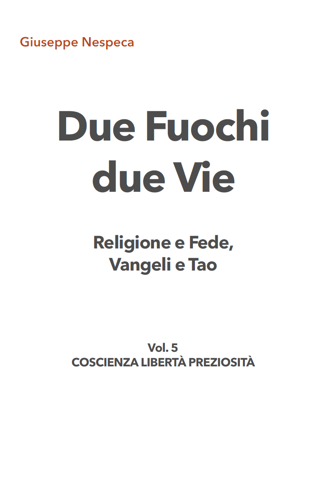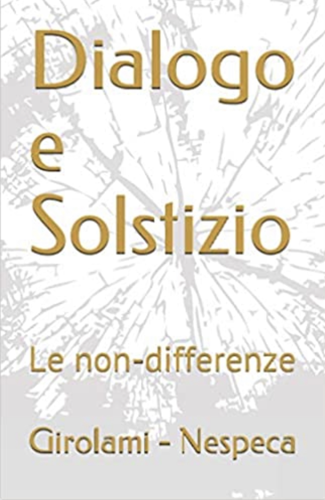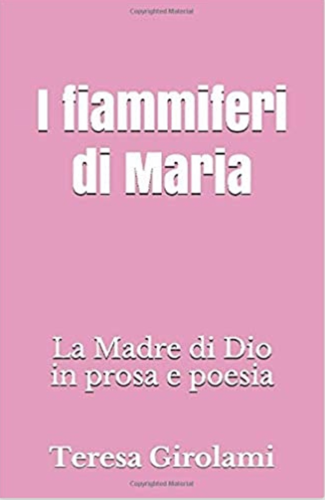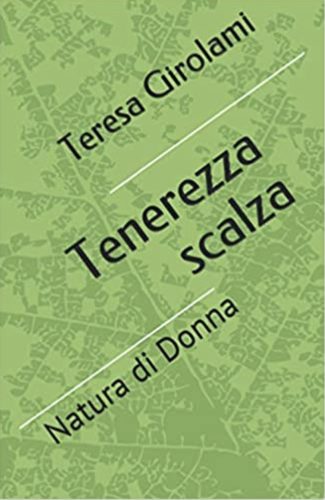1. Man created in the image of God is both a bodily and a spiritual being, that is to say, a being that, in one respect, is bound to the external world and in the other transcends it. As a spirit, as well as a body, he is a person. This truth about man is the object of our faith, as is the biblical truth about his constitution in the 'image and likeness' of God; and it is a truth that has been constantly presented by the Magisterium of the Church down the centuries.
The truth about man has never ceased to be the object of intellectual analysis throughout history, both in philosophy and in numerous other human sciences: in a word, the object of anthropology.
2. That man is spirit incarnate, if you like, a body informed by an immortal spirit, can already be deduced to some extent from the description of creation contained in the Book of Genesis and in particular from the "Jahvist" account, which makes use, as it were, of a "staging" and anthropomorphic imagery. We read that "the Lord God moulded man with dust from the ground and breathed into his nostrils a breath of life, and man became a living being" (Gen 2:7). The continuation of the biblical text allows us to clearly understand that man, created in this way, is distinguished from the entire visible world, and in particular from the animal world. The "breath of life" made man able to know these beings, to name them and recognise himself as different from them (cf. Gen 2:18-20). Although there is no mention of the "soul" in the "Jahvist" description, it is nevertheless easy to deduce that the life given to man in the act of creation is of such a nature that it transcends the mere bodily dimension (that proper to animals). It draws on, beyond materiality, the dimension of the spirit, in which lies the essential foundation of that "image of God" that Genesis 1:27 sees in man.
3. Man is a unity: he is someone who is one with himself. But in this unity is contained a duality. Holy Scripture presents both unity (the person) and duality (soul and body). One thinks of the Book of Sirach, which says, for example: "The Lord created man from the earth and made him return to it again" and further on: "Discernment, tongue, eyes, ears and heart he gave them (men) to reason. He filled them with doctrine and understanding and also pointed out to them good and evil" (Sir 17: 1. 5-6).
Particularly significant from this point of view is Psalm 8 (Ps 8:5-7), which extols the human masterpiece, addressing God with the following words: "What is man that thou shouldst remember him, the son of man that thou shouldst care for him? Yet you made him little less than the angels, with glory and honour you crowned him: you gave him power over the works of your hands. You have placed everything under his feet.
4. It is often pointed out that the biblical tradition emphasises above all the personal unity of man, using the term "body" to designate the whole man (cf. Ps 145 (144):21; Jn 3:1; Is 66:23; Jn 1:14). The observation is correct. But this does not detract from the fact that the duality of man is also present in the biblical tradition, sometimes very clearly. This tradition is reflected in Christ's words: "Do not be afraid of those who kill the body, but have no power to kill the soul; rather fear him who has the power to cause both soul and body to perish in hell" (Matt 10:28).
5. The biblical sources authorise us to see man as a personal unity and at the same time as a duality of soul and body: a concept that has found expression in the whole of Tradition and in the teaching of the Church. This teaching has incorporated not only the biblical sources, but also the theological interpretations that have been given of them by developing the analyses conducted by certain schools (Aristotle) of Greek philosophy.
It was a slow work of reflection, culminating mainly under the influence of St Thomas Aquinas - in the pronouncements of the Council of Vienne (1312), where the soul is called the 'form' of the body: 'forma corporis humani per se et essentialiter' (DS 902). The 'form', as the factor that determines the substance of being 'man', is spiritual in nature. And this spiritual 'form', the soul, is immortal. This was later authoritatively recalled by the Lateran Council V (1513): the soul is immortal, unlike the body, which is subject to death (cf. DS 1440). The Thomist school emphasises at the same time that, by virtue of the substantial union of body and soul, the latter, even after death, does not cease to 'aspire' to unite with the body. This is confirmed by the revealed truth about the resurrection of the body.
6. Although the philosophical terminology used to express unity and the complexity (duality) of man is sometimes the subject of criticism, there is no doubt that the doctrine on the unity of the human person and at the same time on the spiritual-corporeal duality of man is fully rooted in Sacred Scripture and Tradition. And although the conviction is often expressed that man is the 'image of God' through the soul, the conviction that the body also participates, in its own way, in the dignity of the 'image of God', just as it participates in the dignity of the person, is not absent from traditional doctrine.
7. In modern times a particular difficulty against the revealed doctrine concerning the creation of man as a being composed of body and soul has been raised by the theory of evolution. Many scholars of the natural sciences who, with their own methods, study the problem of the beginning of human life on earth, argue - against their colleagues - for the existence not only of a link between man and the whole of nature, but also the derivation of the higher animal species. This problem, which has occupied scientists since the last century, involves vast strata of public opinion. The magisterium's response was offered by Pius XII's encyclical Humani generis in 1950. In it we read: 'The Magisterium of the Church has nothing against the doctrine of "evolutionism", insofar as it investigates the origin of the human body from a pre-existing and living Matter - the Catholic faith in fact obliges us to hold firm that souls were created immediately by God - being the subject of investigation and discussion by experts . . ." (DS 3896).
It can therefore be said that, from the point of view of the doctrine of faith, we see no difficulty in explaining the origin of man, as a body, through the hypothesis of evolutionism. However, it must be added that the hypothesis only proposes a probability, not a scientific certainty. The doctrine of faith, on the other hand, invariably affirms that man's spiritual soul is created directly by God. That is to say, it is possible according to the aforementioned hypothesis, that the human body, following the order imprinted by the Creator in the energies of life, was gradually prepared in the forms of earlier living beings. The human soul, however, on which man's humanity ultimately depends, being spiritual, cannot have emerged from matter.
8. A beautiful synthesis of the above creation is found in the Second Vatican Council: "Unity of soul and body," it says there, "man synthesises in himself, by his very bodily condition, the elements of the material world, so that through him these reach their summit" (Gaudium et Spes, 14). And further on: "Man, however, is not wrong in recognising himself as superior to bodily things and in considering himself more than just a particle of nature . . . For in his interiority he transcends the universe' (Gaudium et Spes, 14). Here, then, is how the same truth about the unity and duality (complexity) of human nature can be expressed in language closer to contemporary thinking.
[Pope John Paul II, General Audience 16 April 1986]



